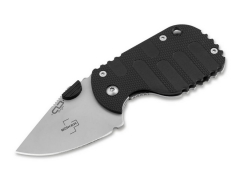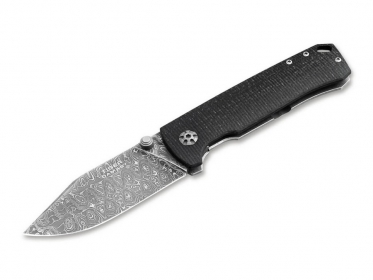- Details
Products description
The impressive Boker Tiger Damascus expands our series of pocket knives steeped in history with a very special model. The collector's knife with a historical past is a real piece of living history and combines high-quality craftsmanship with authentic materials. The Panzerkampfwagen VI, known worldwide as the Tiger, was used by the Wehrmacht from the late summer of 1942 and, despite its modest production number of only 1350 examples and the associated low strategic importance, is considered one of the most famous tanks in history. The development of the heavy tank can be traced back to 1937, and series production began in August 1942. Only seven surviving examples exist today, and they are on display around the world. Due to the low availability, the so-called Frankentiger was even assembled from wreckage parts from different years of manufacture for this purpose.
The tank parts we used, on the other hand, come from a Tiger I of the heavy tank division 502, which was destroyed in action in Latvia in the summer of 1944 in a heavily forested area near the town of Bauska. Wreckage found at the original excavation site has determined that this Tiger is an early to mid-production model. Examination of the battle damage on the remains, military records and local historical reports revealed that this Tiger tank collided with both a Russian T-34 medium tank and a SU-76 SPG, while also being hit by a stationary 45mm anti-tank gun was damaged. It is still unclear which of the impacts caused the most damage and sealed the tiger's fate. However, with multiple 76mm shrapnel embedded in the heavy armor, it is believed that a nearby T-34 landed the crucial hits before it too was destroyed 300m away.
Otto Carius and Albert Kerscher, two of the most successful tank commanders of World War II, tried to stop the advance of the Soviet forces on Riga with heavy tank battalion 502 at the time. The department was able to defeat the enemy blockade forces at Tukums so devastatingly that they were able to withdraw to Kurland, Latvia, together with over 500,000 other soldiers from Army Group North. There the forces were trapped as the Soviet advance continued. The Kurland boiler served as a bridgehead and could be supplied by the Navy by sea. It withstood six major attacks by the Soviet forces until the unconditional surrender on May 8, 1945.
The linear Boker Tiger Damascus is equipped with a unique Damascus blade made from the steel of the battle tank destroyed at Bauska. The non-stainless mosaic damask is hand-forged for us by Chad Nichols in the Intrepid pattern, reminiscent of the armor marks left in the ground by the tiger's heavy tracks. In contrast to conventional damask, no layers are created in the production of mosaic damask, but complex damask bars are forged by hand in a complex and very complicated process to form a mosaic.
The ball-bearing blade is opened with a thumb stud and locked by a sturdy steel frame lock with a stonewash finish. A Hinderer Lock-Stop acts as overextension protection for the lock. The overall shape of the knife pays homage to the tank's famous lines, while the decorative blade pivot bolt is modeled after the main drive sprocket. The slightly contoured grip scale made of jute micarta has precisely milled grooves and is reminiscent of the characteristic surface structure of the Zimmerit coating on German armored vehicles. With lanyard hole and milled clip (tip-up/r) with steel ball. Handcrafted in the Boker knife factory in Solingen. Delivery with elegant floating display, certificate of authenticity and individual serial number.
• Overall Length: 19,8 cm
• Blade Length: 8,5 cm
• Blade Thickness: 3,6 mm
• Weight: 141 g
• Steel: Damascus
• Handle Material: Micarta



